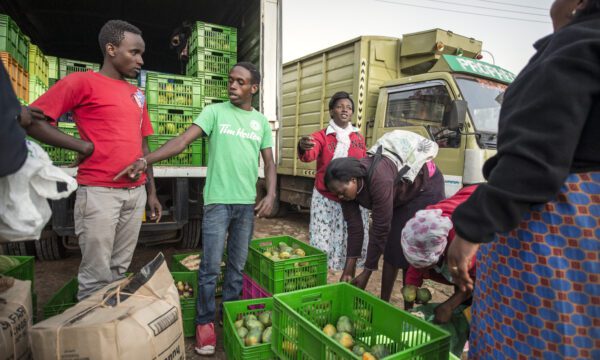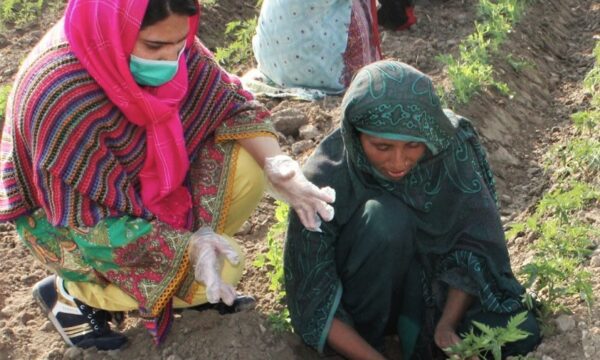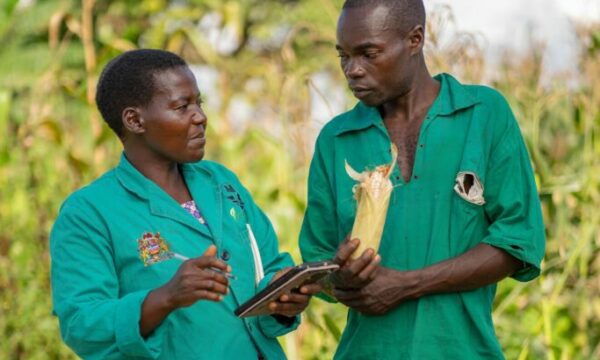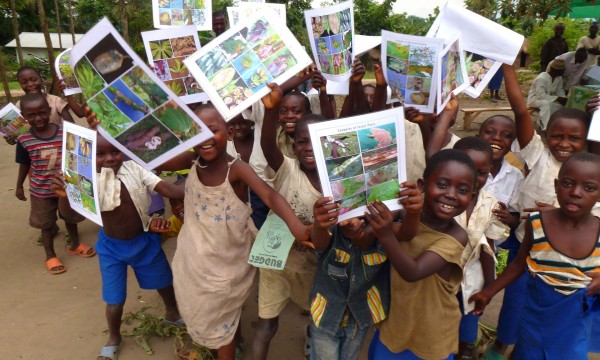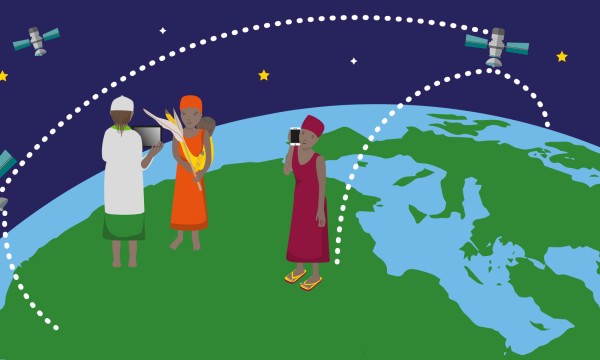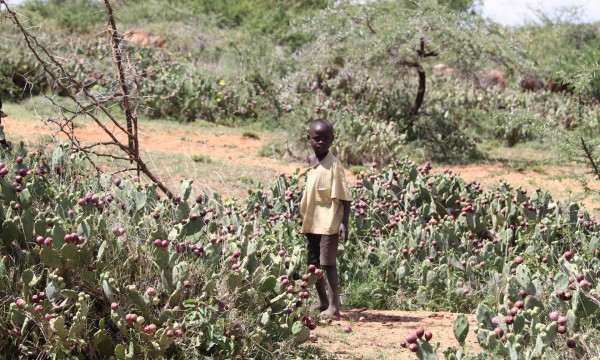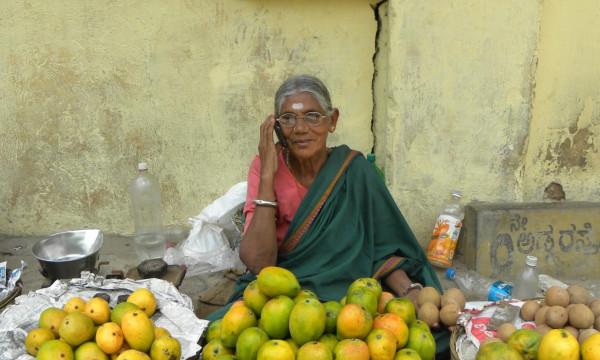By sharing science-based knowledge about crop health, CABI helps smallholder farmers to grow more and lose less, increase their incomes and improve their livelihoods
The challenge
With global challenges like climate change making it increasingly difficult for smallholder farmers living in poor rural communities to grow and sell food, sharing knowledge about crop health has never been more important.
The world’s 800 million smallholder farmers produce most of the world’s food, but the majority live in poor and vulnerable rural communities where they often lack access to science-based information about crop health.
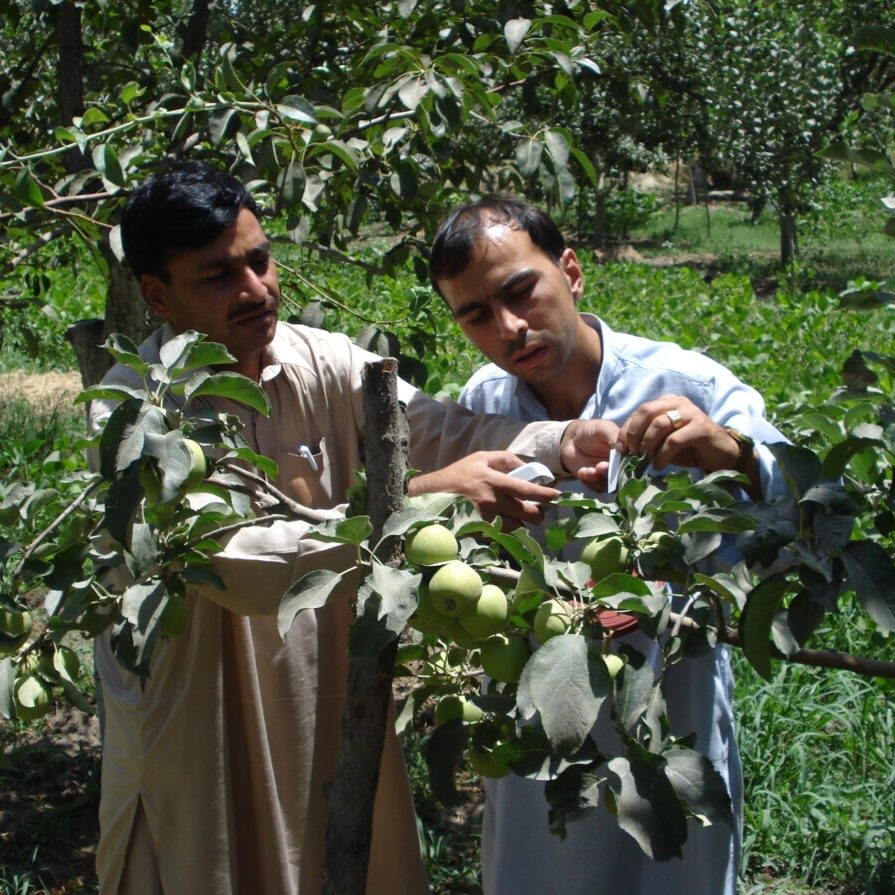
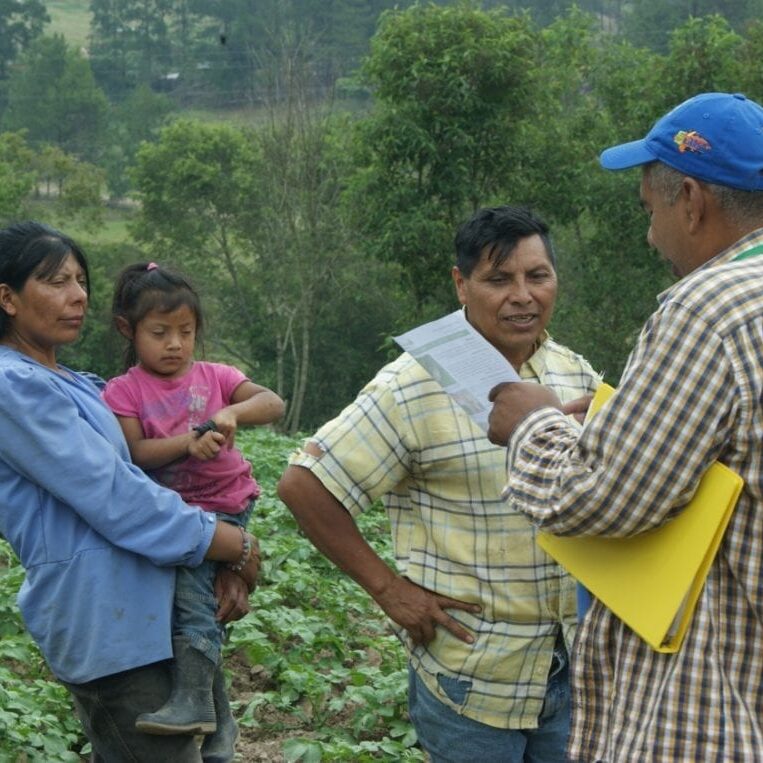
Providing solutions
Working with our donors and partners, we help share knowledge about integrated crop management and plant health with smallholder farmers to help them grow more and lose less.
For example, the CABI-led Plantwise programme improves farmers’ yields and incomes while reducing the use of toxic pesticides. Through the programme, we also help countries improve their plant health systems, so that they can prevent and manage pest outbreaks more effectively.
We have successfully increased plant health knowledge and helped farmers across the world grow healthier crops using natural solutions such as biopesticides and biological control of crop pests, helping them to use fewer chemical pesticides and implement more agricultural best practice.
Our crop health expertise in more detail
The CABI-led Plantwise programme increases food security and improves rural livelihoods by reducing crop losses. Since its launch, Plantwise has supported over 30 million smallholder farmers around the world with crop and plant health knowledge.
We work with donors and partners to deliver projects in integrated crop management (ICM), combining a variety of practices in, for example, pest and soil health management, helping farmers to grow better crops.
Access to healthy seeds and soil is essential for smallholder farmers in developing countries. We help make high-quality seeds available and share information about organic fertilisers and good soil health practices or Integrated Soil Fertility Management (ISFM).
Key contact
For more information and enquiries about our expertise in crop health, please get in touch.

Ulrich Kuhlmann
Executive Director, Global Operations
T: +41 (0) 32 4214882 E: u.kuhlmann@cabi.org
Stories of impact
Read about the variety of work CABI delivers, and the difference we make
Related Projects
Explore our recent projects from around the world
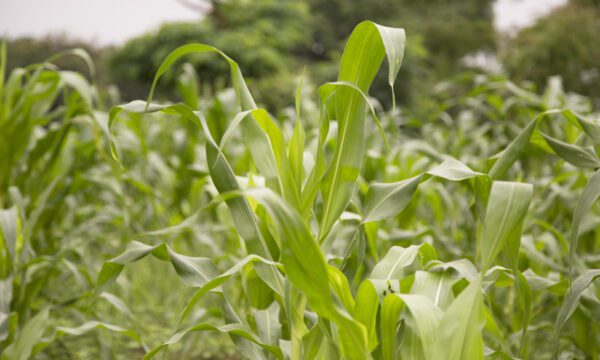
EU-China joint action to increase the development and adoption of IPM tools
The persistent threat of invasive agricultural pests and their chronic re-emergence underlines the importance of Integrated Pest Management (IPM) tools and their implementation. Pest management typically relies largely on chemical pesticides, increasing the risks to humans and wildlife. Despite European Union and Chinese policies promoting the use of IPM, widespread adoption by farmers is limited. This project will utilize existing knowledge and techniques to adapt and optimize future IPM tools and practices. The project will further develop high-potential IPM tools and design cost-effective, environmentally safe IPM packages for economically important crops. Together with partners, CABI will lead the development of a web-based IPM tool performance demonstrator. CABI will also make valuable contributions to the development and efficacy of IPM tools against fall armyworm and develop a biocontrol agent for common ragweed.

Earth observation to improve critical datasets for pest risk modelling
Rising temperatures have led to pests, diseases and weeds establishing in areas of the world that were previously uninhabitable. Furthermore, growth in global trade and new trade pathways increase the risk of accidental movement of pests. Earth Observation (EO) and climatic data can help by improving predictions about where potential agricultural pests and diseases may be a threat. Information produced by models can help decision makers understand and prepare for future risks. Working with a consortium of researchers, this project will use EO data to improve the data layers used in models that predict where pests can establish, including irrigation, areas under protected agriculture and climatic canopy conditions, demonstrating the improvements made to species distribution estimations for key pests and biological control agents.
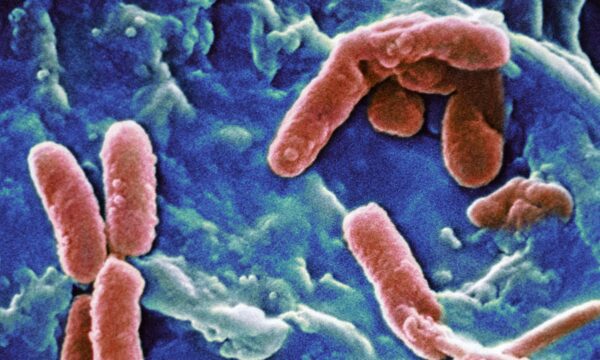
The European MICRObiome Biobanking (RI) Enabler
Microbiomes are communities of microorganisms that include bacteria, archaea, protists, fungi and microalgae, their structural elements, metabolites, signal molecules, mobile genetic elements and surrounding environmental conditions. They are essential for maintaining ecosystems and the health of plants, animals and humans. The EU-funded MICROBE project will cooperate with research infrastructures to create and develop methodologies and technologies to enable access to microbiome samples and associated data. The project objectives include technical solutions for microbiome preservation, propagation and functionality assessment, as well as data infrastructures. MICROBE will also address issues associated with standardization, ethical and legal requirements, and business opportunities.
Featured Publications
Papers and other publications that we hope you find enlightening

